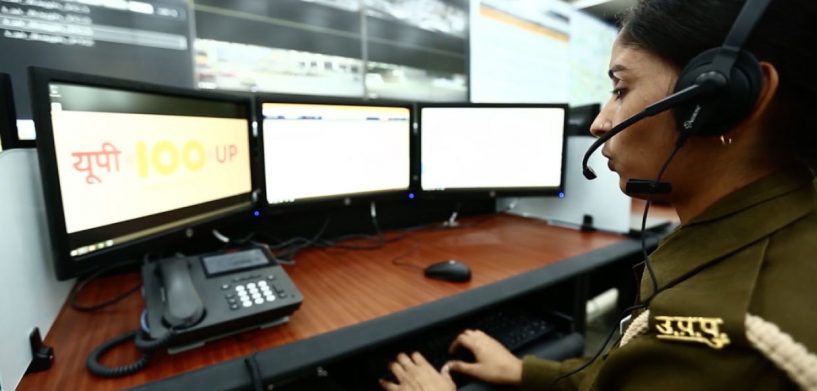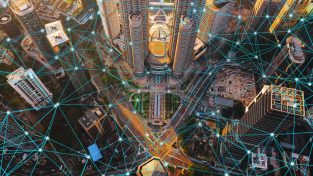BK: Welcome to HxGN RADIO, my name’s Brian. Thank you, again, for joining us.
The state of Uttar Pradesh in India is seeing a big change in emergency response. Discover how Uttar Pradesh police are protecting its 220 million people, with an all-new call-handling, officer-dispatching, and agency-wide reporting solution statewide, in this episode today.
I’m here with Tapan Sharma with Hexagon Safety & Infrastructure. He works in the Asia-Pacific region with Hexagon customers and partners there to implement innovative technologies. And in today’s episode, we will be discussing how the state of Uttar Pradesh went from lacking even a common emergency number to dial for police assistance to creating possibly the largest emergency response system in the world. Thanks for joining us today, Tapan.
TS: Thanks. Thanks, Brian.
BK: Good to have you. This is exciting already, just reading about it and hearing about what’s going on there, so I would love to hear more about what’s going on over there in Uttar Pradesh and with the police department and everything.
TS: Sure. So, a quick brief on Uttar Pradesh, what it is. Uttar Pradesh, in terms of population, as you said, 220 million people, which is nearly the population of the entire U.S., and in size, it is the fourth-largest state of India, so technically, that means it is the size of the UK. So, the exciting part is, size of the UK, population size of the U.S., so it’s one of the most densely populated [regions]I would say, on this Earth. So that’s how it is, in terms of Uttar Pradesh. Talking about Uttar Pradesh police, it is one of the largest single police forces, close to 300,000 police force under a single jurisdiction, so all of these numbers sound very exciting, I hope.
BK: Yes, I think very exciting.
So, going from having no emergency response, or not even a call number, to having over 300,000 police.
TS: Yeah, so the challenge was, there were silo systems happening. The state in the root 75 districts. So there’s 75 cities in Uttar Pradesh. Out of those 75, two or three were having a system of dialing the emergency response. So there was a dire need to have a centralised number for the entire state.
BK: Yes.
TS: So that is how this entire idea popped up.
BK: Interesting. So before the system was implemented, what was the process that citizens had to go through to get help?
TS: Before the system was there, I would say three cities were having a number to dial in that was, at least, there. For the remaining 72 districts or cities, people would have to travel all the way to the police stations, make a complaint. Half of the time, they would really lose the interest reaching to the police station and drop the idea of making any complaints.
BK: So what if there was a serious situation?
TS: I would say, that’s really, only the crime, which was of a very severe nature was recorded. Most of the time, the neighbor fights would not be recorded because nobody would like to take the pains to go to the police station and this time and make a complaint. So that was a big problem, and that’s where the need arises for having a system to solve [problems].
BK: Absolutely. So they just kind of took care of it on their own and that’s not always the best thing.
TS: Yes.
BK: So what technology did the UP Police use to implement, and why did they use this, by the way, too?
TS: Okay, so it has two parts to your question. First, I’ll try to tell you why it was done. It is a need and a political need. So when I say need and a political need, for any state to flourish, the law and security is something which everyone wants to invest in. So as I said, there was no system in place for the political development of the state. The need was to have a system which depicts and promises law and security for the citizens of the state.
So that was the political state of mind, and the parties wanted to have it in their manifesto while waiting for new elections that ‘We will have the citizens safe; you will have the emergency response team responding to your needs within a flash of 15 minutes to 20 minutes.’ So, that gave the idea of this.
[Serving] 220 million people couldn’t be easy, so the backbone of the entire system has to be the robust technology, and that’s where they realised someone who has proven credentials who could sustain such volumes has to become [centralized]. And that’s where the police and the state government approached us as well. They even came to New York to see the New York police, and other police [agencies]in the U.S., to see how theirs systems are working. And that’s where they realised Hexagon Safety & Infrastructure’s the technology of choice.
BK: Interesting. I love that. So you mentioned Hexagon’s solutions as well, how are they being utilised in this? You can go into a little more about that.
TS: This is something really very, very exciting because this is the first time we have deployed a solution in Hindi, the local language. So, being in English, the software has been done in Hindi. We have around 250 call takers, 150 dispatchers under a single umbrella in the system. We have developed multiple [solutions]for citizens, for police forces. There are a lot of new solutions for the needs of the police in this case. Some solutions for just management, for beat planning. But there’s a lot of customary applications that have been done by Hexagon for the police.
BK: Excellent. So you sort of touched on this, but what are some of the goals? What were they as they started, but what are, also now, some of the goals to setting up that command centre, emergency response, etc.?
TS: I would say, since people are either dropping the idea of making any complaint, the immense goal was to serve every citizen. The idea was to serve 220 million people, so any complaint in the urban area should be addressed in 15 minutes, and in the rural area, should be 15 minutes. So the immense goal was any person who reaches police should be responded to within 15 to 20 minutes. That was the key goal.
BK: Excellent.
TS: Serving the people within a timeframe, because if you don’t put this in a timeframe, this is of no use.
BK: Exactly.
TS: If I make a complaint today and the police arrive tomorrow, by then the situation is all over.
So the immense goal, if you ask me, was a timely response to [those in need].
BK: And also effective, of course.
TS: Yes.
BK: Absolutely. So I’m assuming that’s going very well? They’re meeting their goal?
TS: Today we have around 150,000 calls coming in per day, out of which some are some consultations, which are trying to be sorted out. We are close to 20,000 dispatchers. So 20,000 places police are reaching in this state, solving crime. I would say around 70 per cent of crime, the petty crimes, has been controlled by such initiatives. So it’s only the very severe nature of crimes, which are under surveillance, but I would say the system is far more effective than one would have imagined.
BK: So, going off with that, continuing on, how has the response been from … how has it changed the state, the emotional state, the citizen state of Uttar Pradesh?
TS: Okay, as I said, people never had a belief in police; they had almost lost belief in the police. And they never thought somebody’s going to respond to their needs. With the visibility, with the police at every place, with the police reaching [them]in time – I’m talking 15 minutes is the desire, but you will be surprised to know, in some cases, the police is responding in five minutes – so when all of this is happening, the perception of the people regarding the systems, regarding policing, regarding the technology is changing drastically. We’ve just been hearing positive stories every day. Just to apprise you, we have a process in the state. Every day there’s published in the news one success story of this case. So every day you have one success story – maybe a wounded person has been saved or there was a fire and they saved people. So every day, one success story has been published. So it’s a great initiative, and it has a very, very positive feeling in the people and positive views going around.
BK: Good, and they’re feeling safer, of course.
TS: Absolutely safer, and it is calling for investment in the state as… when people want to see the state going for technological advancement, it means the state is open to new technologies.
BK: Yeah, I love that. And I’m glad that your news is reporting something positive that’s happening. It’s nice to hear that they’re actually looking, hey, here’s something good that happens every day. I love that. That’s a great way to do things, so I appreciate that. So, the future. What’s the future looking like for UP police? You said that, actually, others are already looking to them as a model, so where’s everything going from here?
TS: In India, there’s an agency called BPR&D, which is an agency for defining the procedures and rules for policing. That agency visited the emergency response centre. They were touched to an extent that they have published a note to all state police forces that the morale of UP police should be implemented, the software being used should be considered, the technology is great, and this for us acted as a word of mouth publicity – not only word of mouth because now it is documented – shared to all state police. So now when my sales teams reach out to any new state, the police are all ready and waiting for us to be there. And they say, oh, we already have a letter from the central body saying that we should replicate UP. So that’s how the success is going far.
BK: Excellent. Very encouraging. Thank you for sharing all of this. Anything else you want to share as we wrap up?
TS: Everyone is very passionate because when you talk about technology in a place where they had never seen anything, it can just be felt and it can be seen, so we would love people to visit there and go to these starts, which would give them the idea of the volume that we are handling today.
BK: It’s so great, too, to hear, like you said the introduction of this technology in a place where they didn’t have that, but to actually see such powerful results, such positive powerful results, as well right in front of your eyes. That’s amazing; it’s wonderful. Awesome. Tapan, thank you so much for your time, appreciate it. Thanks for sharing everything here.
And of course, if you want more information on this discussion, go to HexagonSafetyInfrastructure.com; all of that information’s there. Be sure to tune in to additional episodes on HxGNSPOTLIGHT.com. Have a great day.

















